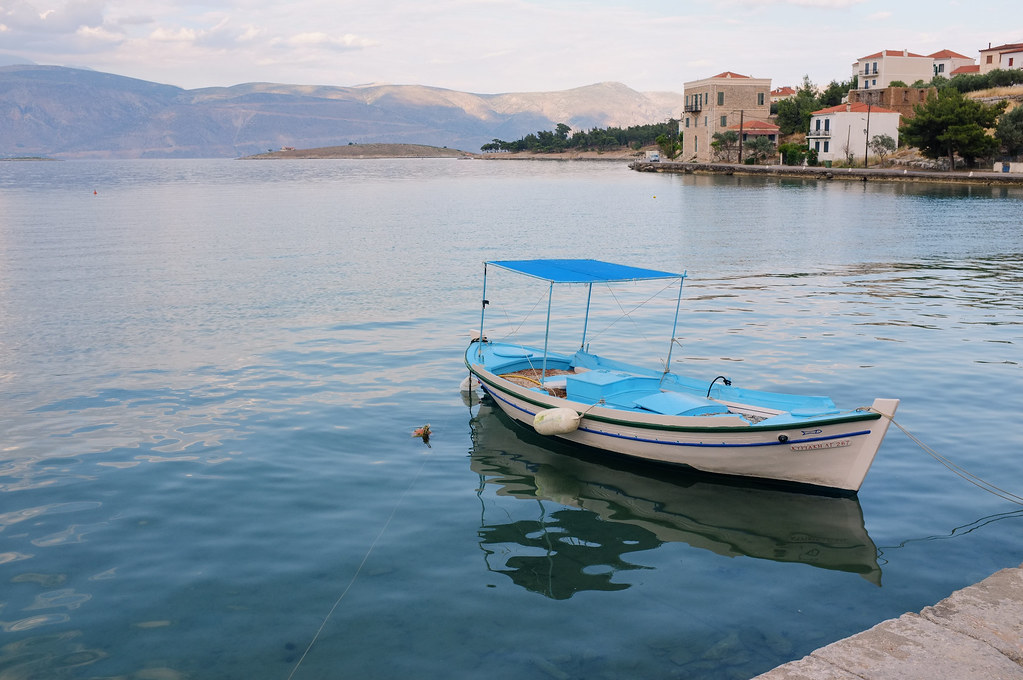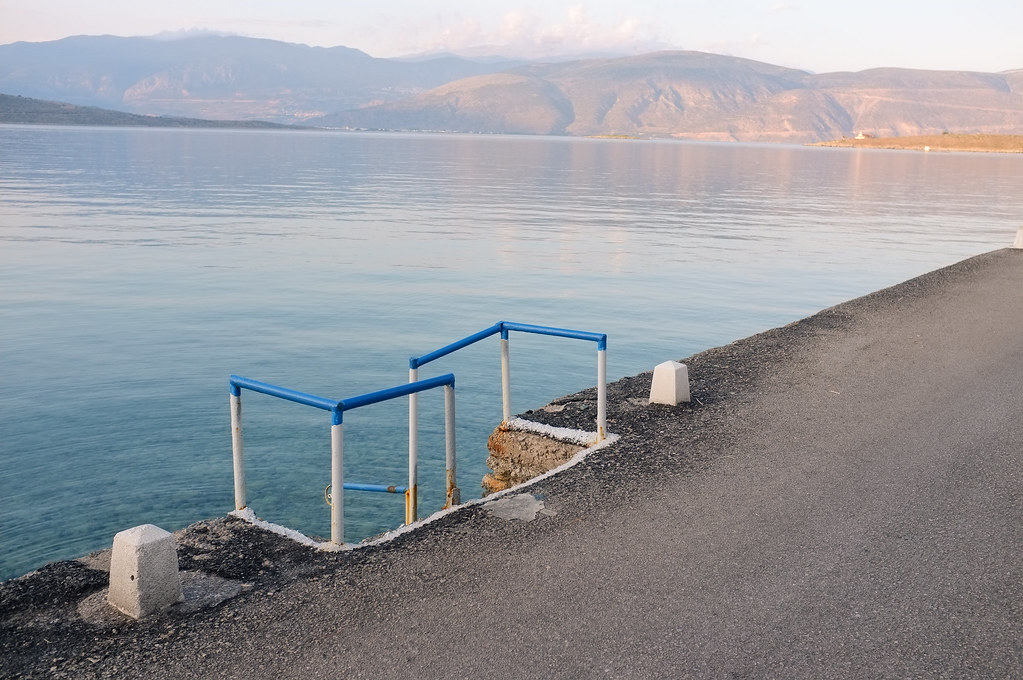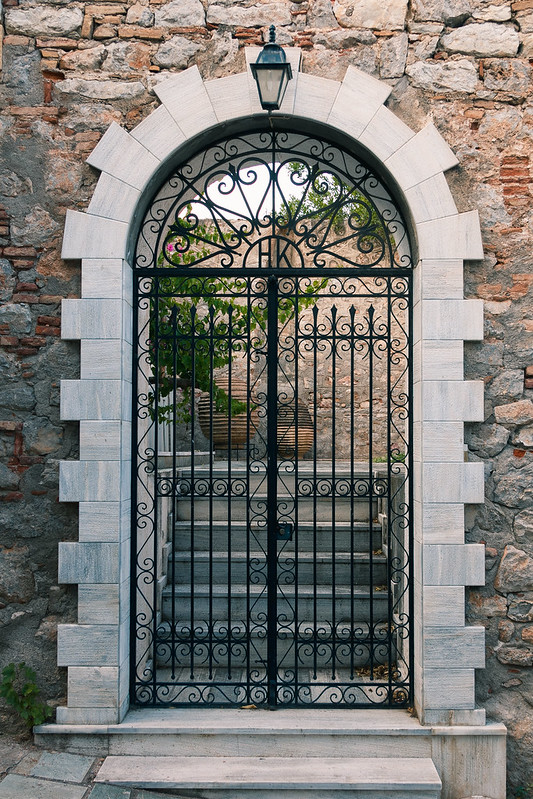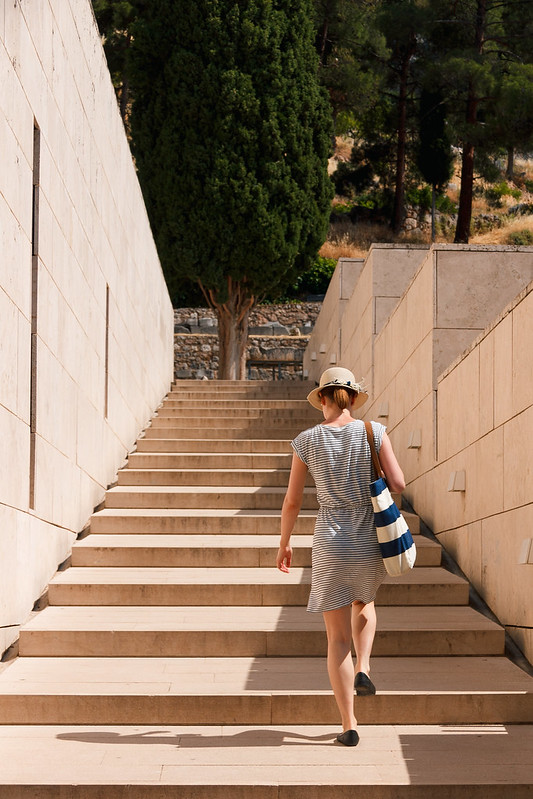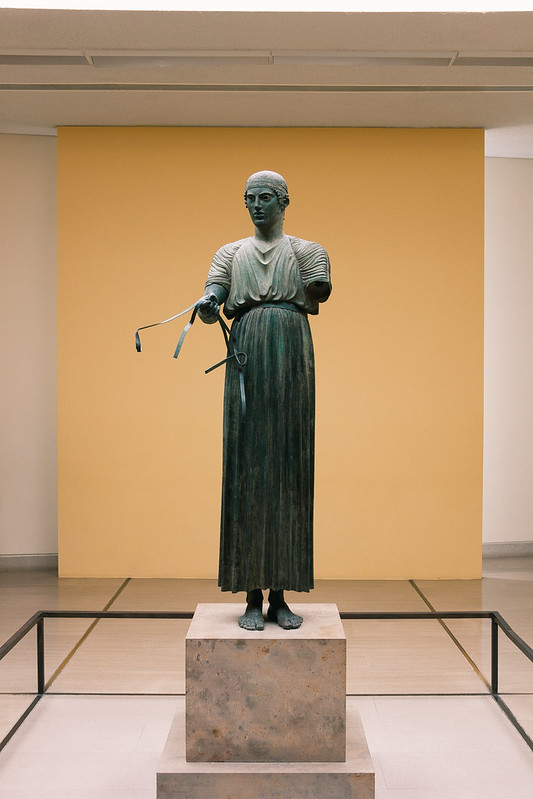Greece 2015 – Galaxidi & Delphi
After we had seen Athens we headed North. A few hours of driving later we already arrived in Galaxidi, a small fishing village close to Delphi. We had picked Galaxidi since it was close enough to Delphi and also not far from the Rio-Antirrio bridge which connects mainland Greece with the Peloponnese.
Galaxidi was a little different from the rest of the places we’d stay at during our vacation, as it is not known to be frequented by foreign tourists. It does have a few small hotels and a harbor where a few Yachts are anchored, but apart from the restaurants along the pier there isn’t much to do, which was alright with us. When we arrived we drove straight through the centre of the town without seeing anyone. This is not surprising at noon, and one more thing that makes you feel on vacation in Greece.
We had booked a wonderful small hotel in Galaxidi called the “Archontiko Art Hotel”. Our hotel was a little outside of town, meaning we got to walk around the harbour whenever we’d go to the pier to get something to eat. I took some of the most “greek” and tranquil photos of that vacation while walking along the seaside road in Galaxidi.
The archeological site of Delphi is located a short drive from Galaxidi and an obvious must-see for anyone passing through this part of Greece. We drove to Delphi on a relatively warm day, blue skies and not too many tourists at the main gate. The small city of Delphi does not have anything to offer, the Delphi museum is also a little underwhelming. But the site itself is well worth the visit. It is located on a mountain side facing the valley below, which means that one has to hike quite a bit to get from the entrance to the highest part of the site: The stadium.
We had a great time at Delphi, but like with so many archeological sites in Greece its size is a major hurdle. Many of the sites in Greece are just to big to take in at once, with too many similar temples, stadiums and treasuries wedged between unidentified and unsorted pillars and rocks. It’s not that they don’t have any written explanations, just that its all text, badly translated from Greek and very academic. In my opinion, the biggest issue is that there are no 3D-recreations of what a particular heap of rocks looked like, there is no way to get sense of scale for the different types of buildings. In that regard, the museums I saw in the United States were much more accessible for the average visitor. Still, visiting these archeological gems in Greece is interesting even without the proper historical context.
